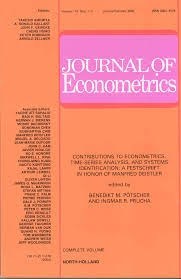
Quaedvlieg, R., Bollerslev, T. and Patton, A. (2016). Exploiting the Errors: A Simple Approach for Improved Volatility Forecasting Journal of Econometrics, 192(1):1--18.
-
Affiliated authorRogier Quaedvlieg
-
Publication year2016
-
JournalJournal of Econometrics
We propose a new family of easy-to-implement realized volatility based forecasting models. The models exploit the asymptotic theory for high-frequency realized volatility estimation to improve the accuracy of the forecasts. By allowing the parameters of the models to vary explicitly with the (estimated) degree of measurement error, the models exhibit stronger persistence, and in turn generate more responsive forecasts, when the measurement error is relatively low. Implementing the new class of models for the S\&P 500 equity index and the individual constituents of the Dow Jones Industrial Average, we document significant improvements in the accuracy of the resulting forecasts compared to the forecasts from some of the most popular existing models that implicitly ignore the temporal variation in the magnitude of the realized volatility measurement errors.